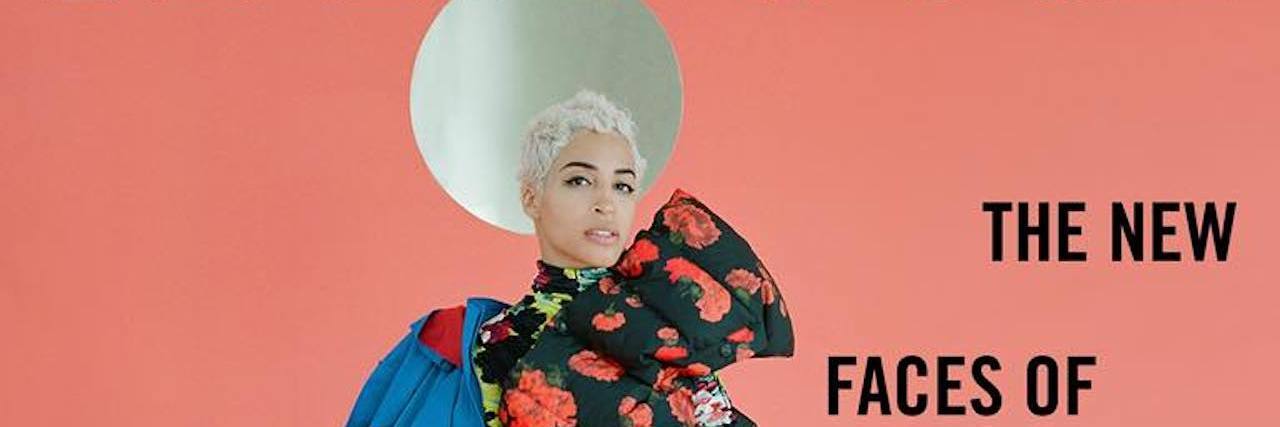Teen Vogue’s September Issue Highlights the Disability Representation We Need
Sometimes the news isn’t as straightforward as it’s made to seem. Elizabeth Cassidy, The Mighty’s news writer, explains what to keep in mind if you see this topic or similar stories in your newsfeed. This is The Mighty Takeaway.
Teen Vogue’s September digital feature, written by Keah Brown, is shedding light on how disability is so often left out of the fashion industry.
Brown, a well-known disability advocate and writer who has cerebral palsy, interviewed three disabled models who are working to make inclusion in fashion a reality. Chelsea Werner, who has Down syndrome; Mama Cax, who is an amputee; and Jillian Mercado, who has spastic muscular dystrophy, are some of the most recognized disabled models in the industry.
“Even as a very young girl and adolescent, I always knew that there was a hole in the fashion industry and that it wasn’t fair that I did not see myself reflected,” Mercado told Brown. “I wanted to feel like I was a part of it, but there was nothing that was helping me see that.”
Brown tweeted that being a part of the feature and the representation she’s always wanted “feels like actual magic.”
During fashion’s biggest month, a mainstream outlet like Teen Vogue featuring disabled models and amplifying the voice of a disabled journalist is something to be celebrated.
“When you want something so bad, manifest it with all your heart and soul, blood sweat and tears because nothing is impossible, no matter if the whole world is against you, you have the strength and power to make it happen,” Mercado wrote on Facebook. “This cover just proves all of that hard work.”
More models with disabilities are making their way up the ranks. One new face is Aaron Philip, who’s signed with Elite Model Management. Philip is a 17-year-old Black, trans, disabled model — and now just one of two models in wheelchairs (along with Mercado) to sign with a major agency.
“I enter the fashion world with intentions of making the industry more diverse, inclusive, and accessible,” Philip told them. “I have never seen a physically disabled supermodel or a Black transfeminine model heralded, celebrated, or even working in the way other models are — and I hope to change that.”
Slowly, brands have started to feature and serve people with disabilities. In March, Tommy Hilfiger expanded its adaptive clothing line to include adults. Cax modeled for the line, which was previously only available for kids.
Target is arguably the largest and most financially accessible brand to include adaptive clothing. At first, Target made its popular children-line, Cat & Jack, sensory-friendly by making the clothing seamless and tags ironed on. In October 2017, the line expanded to include features like side snaps and a hidden midsection opening. In January, Target debuted a new line called Universal Thread, which has adaptive jeans and other items for less than $30. Mercado was also a featured model for the clothing line.
In July, Aerie included models with disabilities and chronic illnesses in its latest Aerie Real Campaign. Though the brand has not offered adaptive clothing, Aerie is a favorite among people with fibromyalgia and other chronic illnesses because of its comfortability. The campaign also showed how models with disabilities don’t need to be limited to modeling adaptive apparel and that clothing can be designed for everyone — not just originally for able-bodied people and then adapted for disabled people. Werner, who is also a gymnast, modeled for Aerie. Other models included women with ostomy bags, mobility devices and more. To apply, the models sent in videos explaining what “Aerie Real” meant to them.
“I sent them a video saying how, as someone who’s never seen disability or chronic illness represented in media, Aerie Real should mean that beauty comes in all shapes, sizes, ethnicities, and abilities,”Abby Sams, who has Ehlers-Danlos syndrome, postural orthostatic tachycardia syndrome, complex regional pain syndrome and endometriosis, previously told The Mighty.
Brands like River Island and ASOS have hired disabled models in the past, too, but so much work is left to be done. There are plenty of models, designers, photographers, fashion journalists, etc., with disabilities, but they’re rarely given the same opportunities as their able-bodied peers.
Unfortunately, disability representation is a problem in nearly every industry. Less than 2 percent of characters on television have a disability, according to the Ruderman Family Foundation, even though the CDC recently reported 1 in 4 adults have a disability. Out of that 2 percent, most roles go to able-bodied actors. The latest project to cast an able-bodied actor for a role is BBC’s two-part biopic called “The Elephant Man.” It will focus on the life of Joseph Merrick, who was believed to have Proteus syndrome, and “Stranger Things” star Charlie Heaton will play the title role.
However, none of that takes away from the progress of features like Teen Vogue’s — especially when it reaches so many young people hoping to see themselves represented in media.
“I also want to take this moment and say that for those of you out there like my younger self, here is proof that you can be anything you set your mind to, this is for you as well,” Mercado wrote on Facebook. “Let it be a lesson that if you want to see change happen in the world for good be the one to change it yourself. I believe in you.”
Header photo via Teen Vogue, by Camila Falquez.

